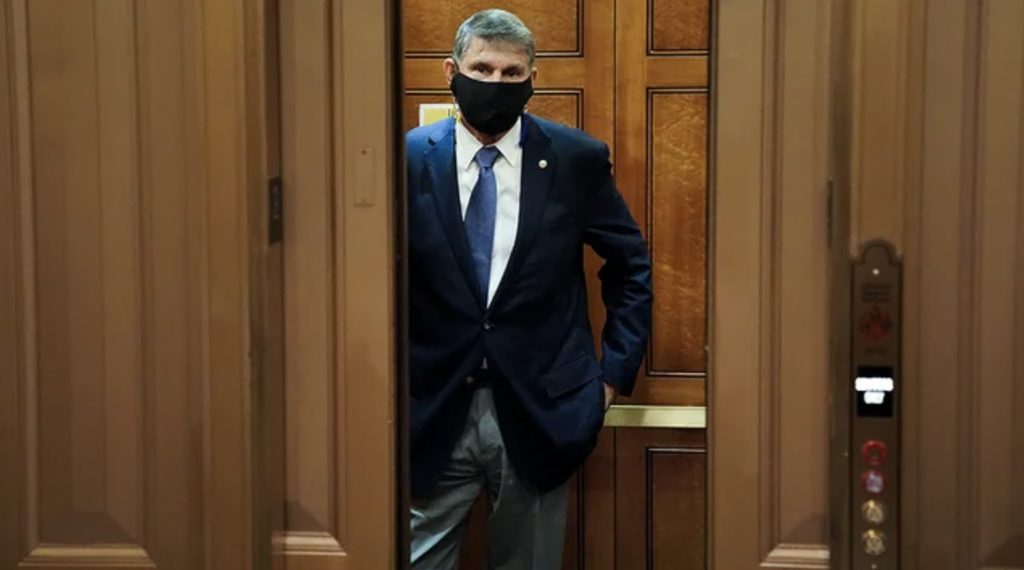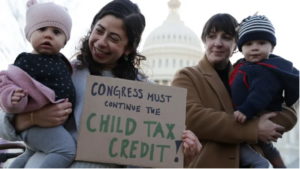
In the recently successful effort to pass the $1.9 trillion COVID relief package past the heavily divided House and Senate, perhaps the most visible person has been Senator Joe Manchin. Manchin, a moderate Democrat from the state of West Virginia, threatened to kill the bill in the Senate at the last moment and only voted along the Democratic party line once he’d gained a number of concessions. This power play, alongside others, shows the importance that Manchin, at the head of a small grouping of conservative-minded Democratic Senators, will have in getting President Biden’s progressive legislative priorities through a Senate that is split straight down the middle with absolutely no room for dissent from the party line.
In some ways, Manchin is a relic of a West Virginia that is long gone. While today the state is a safe Republican state, voting for Trump by a margin of nearly 39% in the 2020 presidential election and around 42% in the 2016 presidential election, it wasn’t always that way. From 1932 to 2000, with the exception of three massive Republican landslide victories from Eisenhower, Nixon, and Reagan, the state voted for the Democratic nominee for President. Prior to Republican Senator Shelley Moore Capito’s election in 2014, the last time the state had a Republican Senator was in 1959.
The state’s status as a historic Democratic stronghold stemmed largely from the massive influence that labor unions had on the state’s politics, as well as the longstanding Democratic legacy that President Franklin Delano Roosevelt’s New Deal projects left on the state. As the unions backed the Democrats and FDR’s policies helped West Virginians, the state was loyal to the party. However, the state has a heavy reliance on the coal industry and a more conservative stance on social issues such as abortion. It was no coincidence that as those issues became hot button political issues, the state shifted towards the Republicans. As the Democratic party adopted a green, socially progressive message, West Virginia was seemingly left behind — perhaps best exemplified by a gaffe by then-Presidential nominee Hillary Clinton, who stood in the heart of coal country and said that her policies were going to “put a lot of coal miners and coal companies out of business” in 2016. With that in mind, it’s no wonder she lost the state by such a historically large margin.
But even as the state shifted Republican from 2000 to 2020, Manchin has managed to stay afloat by pushing conservative, moderate, and bipartisan policies. Elected Senator in 2010, he was able to win re-election in 2012 and 2018 to be the last remaining Democratic statewide office-holder in West Virginia. Manchin describes himself as “pro-life,” he previously enjoyed an endorsement in his 2012 Senate race from the NRA (though the relationship between the pro-gun organization and Manchin has soured as result of his support for light gun control measures), and he was the sole Democrat to vote for Brett Kavanaugh’s contentious Supreme Court nomination.
While those moderate stances have allowed him to win in West Virginia, they have also, along with his vocal criticism of progressive policies such as the ending the filibuster, packing the courts, defunding the police, a $15 minimum wage, and the Green New Deal, drawn the ire of the rising progressive wing of the Democratic party. Already, talk has begun about attempting to primary the more conservative members of the Democratic party — a tactic that has proved to be a progressive favorite, as seen in instances like Representative Ocasio-Cortez’s primary victory over powerful House Democrat Joe Crowley in 2018. “Help us find the next AOC to replace Manchin and Sinema,” said an email from the No Excuses PAC, a political action committee dedicated to attacking “fringe Democrats” in the Senate.
But this tactic won’t work in West Virginia, and it certainly won’t work against Joe Manchin.
For one, this has already been tried. Paula Jean Swearengin, an environmental activist, attempted to primary Manchin during the 2018 election, yet lost by 40 percentage points despite enjoying the support of a number of progressive organizations. And while avid progressive activists may point to individuals such as Cori Bush and Marie Newman — who both lost to powerful incumbents during the 2018 primaries, yet won against the same incumbents during the 2020 primaries and went on to win their respective general elections — as evidence that attempting to primary a second time may work, the situations simply aren’t comparable. Both Bush and Newman ran in fairly solid Democratic districts, wherein one only has to win the Democratic base to win the election. West Virginia, as one of the most red states in the nation, is near the complete opposite of that. A sizable amount of Republican and conservative-leaning independent voters are needed for any Democrat to win any election state-wide. This last fact is perhaps best exemplified by Swearengin’s renewed 2020 effort at West Virginia’s other Senate seat. After winning the Democratic primary election, she was trounced by incumbent Senator Shelley Moore Capito (R), 70% to 27%. Notably, the 27% of the electorate that Swearengin picked up was less than the 36% of West Virginians that are registered Democrats, showcasing the infeasibility of a progressive candidate in a similar mold to Alexandria Ocasio-Cortez or Ilhan Omar in the state.
So, what can be done about Manchin? In order for the broader, national Democratic base to remain invigorated and voting, Biden’s presidency needs to see continuous progress in a similar vein to the sweeping American Rescue Plan. But if Manchin and his group of similarly minded conservative Democrats have their way, most of Biden’s agenda is set to be filibustered into irrelevance unless they can somehow be fit into one of the Senate’s three yearly budget reconciliation bills — and even then, as shown by the American Rescue Plan, negotiations will cause different aspects of the bill to be cut.
With the Democratic Party’s underperformance in the 2020 Senate elections being the reason that Manchin has such influence in the Senate right now, the most obvious solution is to look to the future. Though historically the incumbent party in the White House has struggled in midterm elections, the 2022 Senate map is a friendly one for Democrats, provided that the Democratic Party manages to defend their own vulnerable seats. Vulnerable GOP seats in Pennsylvania and Wisconsin, as well as “lean” GOP seats in North Carolina and Ohio provide opportunities for Democrats to expand their majority by a few seats. Even just one or two additional seats would be monumental for allowing Manchin and other conservative Democrats to play their game of political tight-rope that is necessary for them to retain their seats while simultaneously not hindering desperately needed progressive reforms. In order for this to happen, though, the Democrats have to fix the errors of their 2020 campaign — most obviously by not spending tens of millions of dollars on pie-in-the-sky races, as they did in Kentucky and South Carolina in 2020.
Outside of waiting until 2022, one can look to a previous powerful Democratic Senator from West Virginia — Senator Robert Byrd — for clues on how to get Manchin on board. In the Senate for 51 years, Byrd served as Senate Majority Leader and as Chair of the powerful Senate Committee on Appropriations, which approves funding for much-desired government projects, where he gained the title of Prince of Pork. Pork, in this context, referred to Byrd’s ability to bring valuable funding, projects, and jobs to West Virginia from the federal government — often referred to as “pork-barrel spending.” Today, Manchin, as the key to a productive Democratic term, holds more power than Byrd did. Biden and the Senate Democratic leadership may want to take a note from their experience with Byrd and give Manchin some “pork” to take back to West Virginia, especially as West Virginians grapple with the shift from being the center of American energy priorities to being left out as the Democratic party and America as a whole go green.
This solution — essentially capitulating to moderate Democratic demands for at least two years, before hoping for a larger Senate majority in 2022 — may dissatisfy progressives, and for good reason. The idea that publicly popular policies that would benefit millions can be stalled from passing by a few obstinate Democrats is infuriating. But what is there to do? In a West Virginia that has bolted to the right over the past two decades, Manchin is the best case scenario. It is important to remember that it is because of Democratic failures in down-ballot campaigning in 2020 that he has such influence in the Senate. So for now, we have to deal with the situation at hand: get what we can get from negotiations — which, as evidenced by the American Rescue Plan, still includes policies that help millions — and focus on running a tight, tight ship in 2022 to open up the floodgates of progressive legislation.



